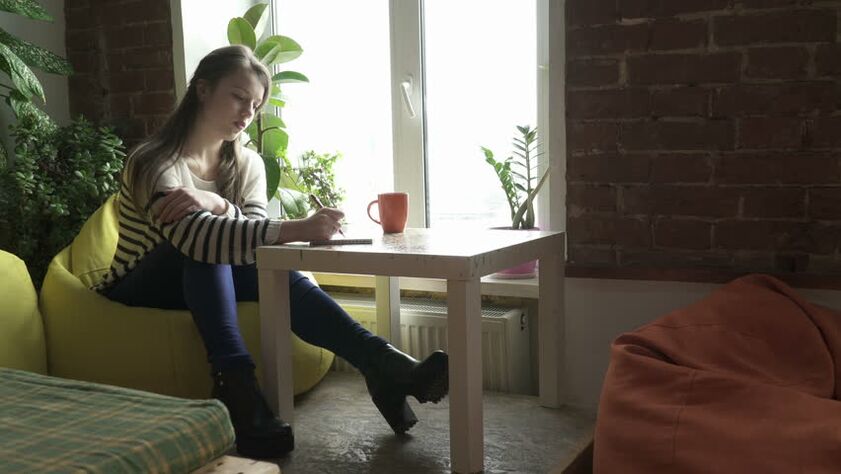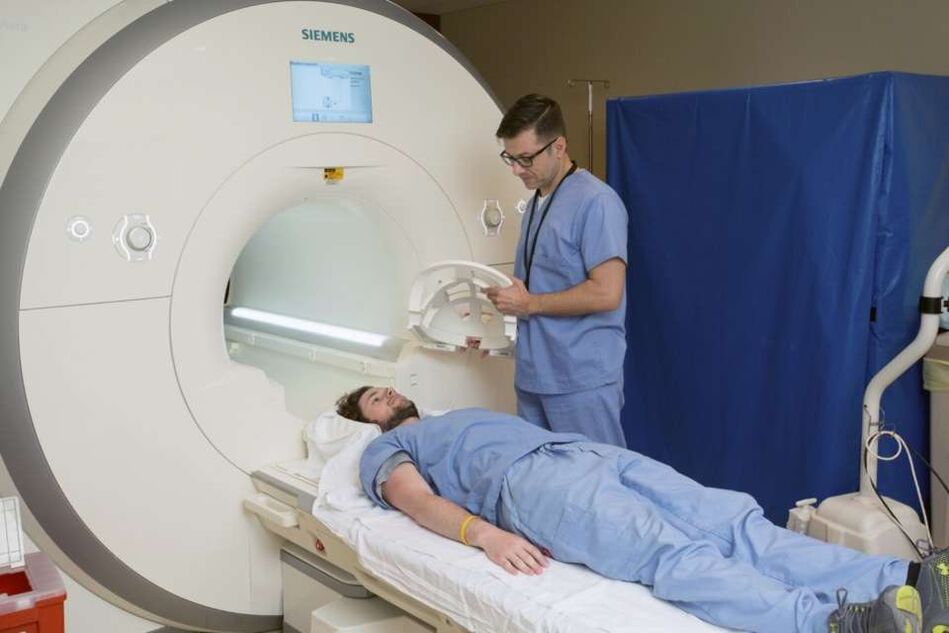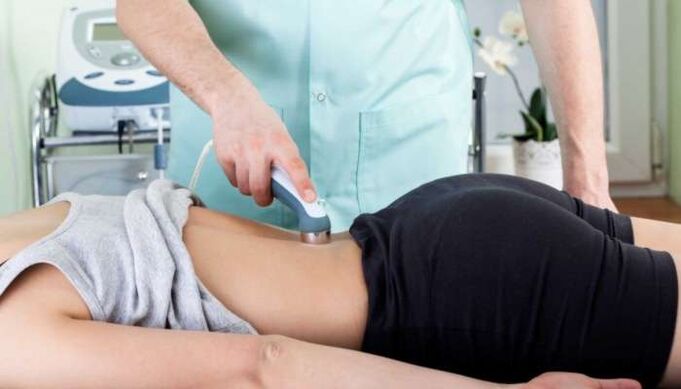
Osteoma is the most severe form of spondylolisthesis, based on structural damage to the discs located between the vertebrae. If the symptoms of lumbar spondylosis are not recognized as soon as possible, the condition leads to deformation of the trunk of the adjacent vertebrae, the intervertebral joints. The circuit and nervous system are involved in the pathological process.
One of the most common forms of this disease is lumbar osteonecrosis, the symptoms of which are very similar in women and men. Many adults have repeatedly felt discomfort in the lumbar region, sacrum, legs, which is caused by osteonecrosis and its complications. Among all the reasons that lead to the loss of the ability to move normally, this disease occupies one of the first places.
The reasons
One of the causes of the disease is poor posture, but there are other causes as well:
- Spinal osteosarcoma, its symptoms and treatment, brings many inconveniences to the patient, often due to increased stress on the spine. That is why the disease often manifests in people whose labor activities are combined with manual labor and weight lifting.
- Another factor that causes the disease is excess weight, which increases pressure on the spine.
- The lack of any load and physical inactivity depletes the nutrition of the disc tissues and slows down blood circulation and metabolism in the spine. The corset muscles are significantly weakened and create a favorable background for the development of pathological changes.
- Improper body posture, patients prefer to sit hunchbacked, resulting in uneven load on the discs and vertebrae, deformed discs and rapid wear.
- Often the cause of lumbar fibroids, its symptoms bring a lot of inconvenience to the patient's life, possibly trauma. They occur when playing sports, exercising without proper preparation, lifting large weights incorrectly, and falling injuries.
- Some experts believe that osteonecrosis is pre-determined even at the genetic level, regardless of which organ-specific degenerative changes are observed.
- The age of the patient is also particularly influential: as the years go by, segments of the spine gradually lose their mobility and elasticity, and are therefore subject to destruction and deformity. In the past, osteosarcoma of the lumbar spine with rather uncomfortable symptoms was considered a disease of the elderly, but today the disease appears in young people from 25 to 30 years old.
- The primary factor can be some pathology that is accompanied by inflammation in the joints of the spine or changes in its structure and shape: ankylosing spondylitis, arthritis, scoliosis, instabilitydisc.

In rare cases, the causes of the development of osteonecrosis can be:
- Hypothermia;
- stress;
- Malnutrition;
- violation of the working and resting regime;
- bad environmental conditions.
When you start to feel discomfort in the lower back, it is better to consult a doctor.
Classification according to the degree of bone necrosis
The grading of osteonecrosis by grade is used to systematically describe the clinical manifestations of the disease. The classification allows you to describe the symptoms of lumbar osteonecrosis and determine exactly when the patient began to be disturbed by the pain:
- The first degree occurs when a disc ruptures, provoked by sudden movements. It manifests in the form of sudden severe pain, in the spine there is a feeling of shock, the muscles are stretched reflexively.
- The second degree of disc protrusion-like symptoms and instability of the spinal body. The pain is aggravated by physical activity. Continuously alternating exacerbations and remissions. If osteonecrosis occurs in the ankle region, the pain will increase when the patient stays in the same position for a long time, often has headaches, discomfort in the arms and shoulders, fatigue in the lower extremities.
- The third degree manifests itself in the form of symptoms of a herniated disc: numbness of the limbs, changes in posture and gait, headache, and discomfort along the affected nerve. Symptoms can mimic kidney disease, gastrointestinal tract, reproductive system disorders.
- Grade 4 begins with the herniation is not palpable, the manifestations may be weaker but the symptoms of vertebral body instability and scoliosis persist. In addition, growths of the vertebral body may appear, often compressing the spinal nerves or blocking the spinal canal, compressing the brain with the back. This extent can be attributed to surgical consequences, if the hernia mass has been surgically removed.
Lumbar osteosarcoma, symptoms that bring many inconveniences, is a rather unpleasant disease. It requires urgent complex treatment and constant monitoring by a specialist.
Symptoms of the disease
Depending on the symptoms, the treatment for lumbar osteonecrosis can vary. This is due to the fact that the disease affects the nervous system, which is why often problems occur in different parts of the body that are in no way connected to the back.
In the early stages of the disease, pain may occur after heavy exertion or prolonged lying in one position, such as the patient often sitting in front of the computer. As the disease progresses, the pain becomes chronic. If the pain syndrome does not manifest itself, then in its place there may be discomfort that interferes with normal life. The complexity of symptoms can be as follows:
- pain in the low back, often radiating to the buttocks or legs;
- spasms in the muscles with a long stay in a statistical position;
- constant tension of the back muscles;
- shot in the back, which most often occurs after a person has been in the cold for a long time;
- sensory disturbances in the lower part of the patient's body;
- numbness of the feet, frequent tingling in the fingers;
- chills of the legs;
- sweating dysfunction;
- Dry skin in the area where the pain occurs.

Symptoms of lumbar osteonecrosis can be aggravated if there is no cure or if one of the triggers becomes more intense. In this case, the pain syndrome is transmitted to the lower extremities. A person tries to find the most optimal position to relieve his condition and not feel the discomfort caused by the disease.
Diagnostic method
Initially, before starting the diagnosis, the doctor needs to collect the patient's history, carefully examine it, assess the health status. In addition, instrument test methods may be required.
A complete history will allow the doctor to suggest what is causing the symptoms of osteonecrosis of the spine, as well as assess the risks of its occurrence. Examination of the patient includes palpation, percussion, and external examination of the skin. In some patients, the doctor may test the sensitivity with acupuncture.
Based on the data collected by the physician, the patient is recommended to undergo additional instrumental studies to confirm the diagnosis and determine the extent of the involvement of the spine and other organs. Patients are advised to undergo:
- X-ray;
- Magnetic resonance imaging;
- CT.

All these diagnostic methods help to determine some features of the development of the disease. MRI is considered to be the most informative of them all, and it is all because other methods only image the human body in a few projections and do not allow a closer look at the whole problem.
Treatment of lumbar osteonecrosis, the symptoms of which begin to bother a person, is selected by the doctor. It is not possible to diagnose and determine the course of treatment by just an external examination, it is important to conduct a comprehensive examination and prevent complications.
Treatment of osteonecrosis in the lower back
Osteonecrosis cannot be completely cured. Good results can be achieved if the patient has grade 1 and grade 2 disease. But in any case, long-term treatment of lumbosacral osteonecrosis is required, since the symptoms are unbearable, they are very strong and unpleasant. Therapy aimed at:
- reduce pain intensity in bright areas;
- eliminate muscle tension that does not allow a person to relax;
- strengthen the muscles of the back, buttocks and lower extremities;
- normalizes blood flow and metabolism in the affected area;
- eliminates the inflammatory process;
- restore normal range of motion in the lumbar region and increase leg sensitivity;
- Improves the functioning of the organs of the reproductive and excretory systems.
Which of the following drugs does the doctor prefer:
- Definitely recommend pain relievers. Pain relievers help relieve pain, but they cannot eliminate the cause.
- To get rid of lenticular swelling and pain, people use NSAIDs, and in severe cases, steroid-based drugs are used to eliminate the symptoms of osteonecrosis of the lumbar spine in women and men. . Their action is aimed at reducing and eliminating inflammation.
- For local anesthesia, vertebral blockade is used. The drug is administered along the lumbar region. Usually they are recommended for patients in grades 3-4 of the disease.
- Muscle relaxants are recommended to eliminate muscle spasticity.
- Chondroprotectors improve metabolic processes in cartilage tissue, stimulate regeneration processes and significantly slow down their deformation.
- Vitamins of group B help improve cell metabolism, reduce inflammation, help remove excess fluid from the body.
- Diuretics help eliminate swelling.
- Immunostimulators increase the activity of the immune system and improve the body's defenses.
- Means to improve blood flow in the area affected by the disease, used by intravenous drip.
Complementary therapy
Your doctor may recommend additional physical therapy methods. Drugs only to treat lumbar osteonecrosis, which are painful symptoms for the patient, will not be enough. To eliminate pain and relieve muscle spasms, the following physiotherapeutic procedures are recommended to improve metabolism:
- amplipulse;
- electrophoresis;
- diadynamic current;
- magnetic resonance therapy;
- acupuncture therapy;
- laser treatment.

Therapeutic gymnastics will also not be superfluous, because with its help you can not only get rid of the pain syndrome, but also strengthen and relax the back muscles. Physical exercises can be performed not only during the exacerbation of the pathology, but also during recovery. Massage and acupressure for great results.
Surgery
For some patients with stage 4 disease, surgery may be recommended. This measure is used in cases where drug treatment does not give the desired results, there are severe motor and neurological disorders and the appearance of hernia masses. During surgery, the herniated discs are removed, then reconstructed, and the displaced vertebrae are reliably reinforced.
Folk remedies
Symptoms of lumbar osteonecrosis of the spine in men do not differ much from those in women. Treatment measures are selected individually for each patient, depending on the stage of the disease. In addition to folk healing methods, it is possible to apply traditional medicine. The patient must coordinate all his actions with the doctor. Good results in the complex treatment have been given by such herbal products:
- To prepare an ointment that improves blood circulation in the affected area, you need to take five red peppers and 1/2 cup of kerosene and vegetable oil. After receiving therapy, they need to lubricate the painful areas at night. Place a dry wool gauze over the treatment area.
- Mixing butter and insects in equal amounts, this preparation applies to the lower back, when there is no strength to endure pain and discomfort.

Folk remedies give good results in the early stages of treatment of lumbar spondylosis, the symptoms of this pathology gradually disappear. It is better to use such recipes immediately after the first signs of the disease appear.
Consequences of illness
The symptoms of lumbar osteosarcoma in men and women cause serious inconvenience, a person cannot sit normally, sleep well, and feel constantly uncomfortable. If there is no timely treatment at the first manifestations of the disease, osteonecrosis can lead to serious complications in the form of sciatica. This disease is characterized by severe pain in the lower back and legs, and even numbness in the limbs. To relieve pain, many patients walk, bend over to the healthy side, but this position only aggravates the disease: the degree of curvature of the spine increases, the process of disc destruction accelerates.
The most dangerous complication can be mentioned is instability of the vertebrae. The intervertebral discs are unable to hold the vertebrae, and the lumbar region, under heavy load, begins to slide down from the sacrum. This condition can lead to disruption of internal organ systems. Women can get inflammation of the uterus, appendages, and men have capacity problems.
Precautions
You can prevent the disease if you apply the following methods:
- remove heavy loads on the lower back;
- strengthen the back muscles;
- maintain correct posture;
- strengthen the spine with regular physical activity;
- adhere to a reasonable diet;
- rest in moderation;
- cure back pain in a timely manner.

Only timely examination and comprehensive treatment can prevent complications and return to the way of life before.














































